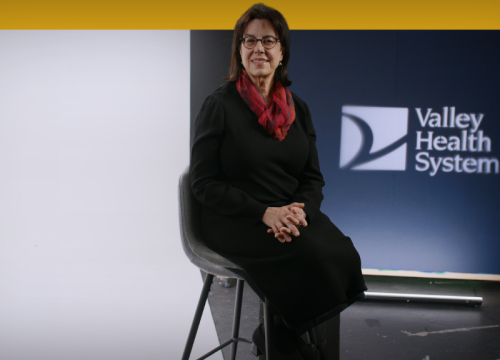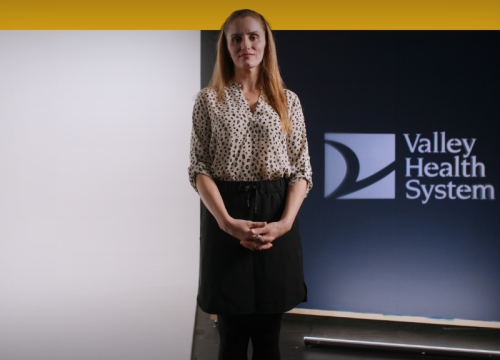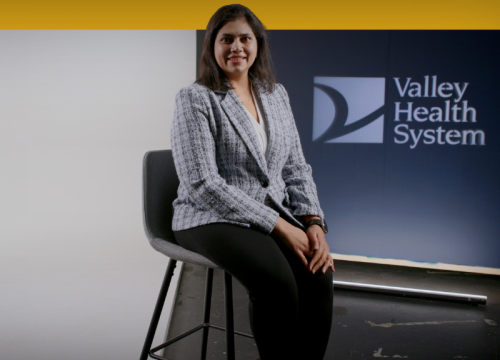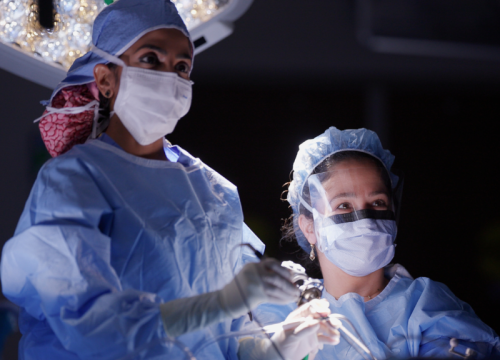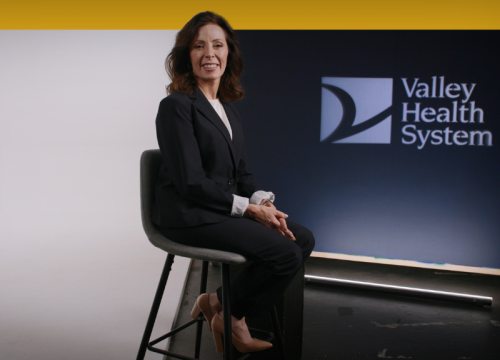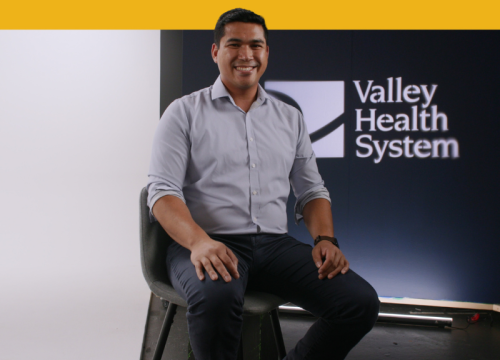If you have lung cancer, there’s a strong chance your treatment plan will include surgery to remove your tumor.
It’s natural to have concerns when you find out you need surgery. But you can also feel confident knowing Valley’s thoracic (chest and lung) surgeons are some of the most experienced in the region.
We also offer an advanced type of lung surgery — called robotic surgery — that you can’t find at every medical center. Not only does this approach enhance your safety during surgery, but it also leads to a faster recovery after surgery.
What is Robotic Surgery?
Robotic surgery is a type of minimally invasive surgery. Compared to traditional surgery, minimally invasive surgery uses smaller incisions, so it’s less damaging to your body. For example, with minimally invasive lung cancer surgery, we can remove your tumor without spreading your ribs (or removing a rib).
Certain features set robotic surgery apart from other types of minimally invasive surgery:
- It uses innovative robotic technology: Your surgeon uses a computer to control several robotic “arms.”
- It enhances precision and dexterity: When your surgeon moves their hand, wrist, and fingers, the robotic arms perform the same sophisticated movements in real-time. The robotic arms can also rotate and bend in ways a human hand cannot.
- It provides an up-close look inside your body: During some minimally invasive procedures, surgeons only have a two-dimensional view of their operating area. But a high-definition camera provides a magnified, 3D view during robotic surgery.
Who is Eligible for Robotic Lung Cancer Surgery?
We can usually offer robotic lung cancer surgery if you meet the following criteria:
- You have non-small cell lung cancer, such as adenocarcinoma or squamous cell carcinoma
- Your cancer hasn’t spread beyond your lungs
- You’re healthy enough to undergo anesthesia and surgery
Benefits of Robotic Surgery for Lung Cancer
Compared to other types of lung cancer surgery, a robotic approach may offer several benefits:
- A lower risk of complications, including infection in your surgical wound
- Less pain, meaning you shouldn’t need as much pain medication
- More minor, less noticeable scars
- Less blood loss, which reduces the need for a blood transfusion
- A faster procedure requiring less anesthesia
- A shorter hospital stay after surgery
Types of Robotic Lung Cancer Surgery at Valley
We offer several robotic lung cancer surgery types, including “lung-sparing” options that leave most of your healthy lung tissue intact. The type you’ll need depends on several factors, including the size and location of your tumor.
Our areas of expertise include:
- Wedge resection: With this procedure for tiny tumors, your surgeon removes the smallest possible amount of lung tissue from the affected lobe.
- Segmentectomy: Your surgeon removes a portion of the lobe containing the tumor.
- Lobectomy: Your surgeon removes one of the lobes that make up your lung (the left lung has two lobes, and the right lung has three).
During your procedure, your surgeon may also remove nearby lymph nodes. We’ll examine these lymph nodes under a microscope to ensure cancer cells haven’t spread outside your lung.
Why Choose Valley for Robotic Lung Cancer Surgery?
- Comprehensive lung cancer care: If you need other types of lung cancer treatment in addition to surgery, you’ve come to the right place. Valley’s thoracic surgeons work closely with other cancer specialists to ensure you get the right treatments in the correct order. For example, we collaborate with medical oncologists specializing in the latest cancer-fighting medicines, including immunotherapy. And we partner with radiation oncologists who offer advanced radiation treatments such as stereotactic radiosurgery.
- Advanced care that’s close to home: When you choose Valley for lung cancer care, you get safe, effective and the most advanced treatments right in your backyard. We offer the same breadth and depth of cancer expertise as medical centers in larger cities. We also provide treatment options that aren't widely available, including robotic lung cancer surgery.
- Extensive experience: At some medical centers, lung surgery is performed by general surgeons who occasionally treat lung cancer. At Valley, our lung cancer surgeons are board-certified thoracic surgeons whose primary focus is lung cancer surgery — meaning they perform these procedures frequently. Research shows you’re more likely to have a successful outcome if your surgeon performs many lung procedures yearly.
- The full range of surgical options: Even if you’re not eligible for robotic lung cancer surgery, you still have options at Valley. Our team offers every type of traditional and minimally invasive lung cancer surgery, including video-assisted thoracic surgery (VATS).
- A focus on your recovery: Our dedicated thoracic unit's nurses and other providers have specialized training. This means they’re uniquely qualified to keep an eye on you after lung surgery. You also have access to Valley’s outpatient pulmonary rehabilitation program. This tailored exercise and education program will help you strengthen your heart and lungs after surgery so you feel (and function) better.



